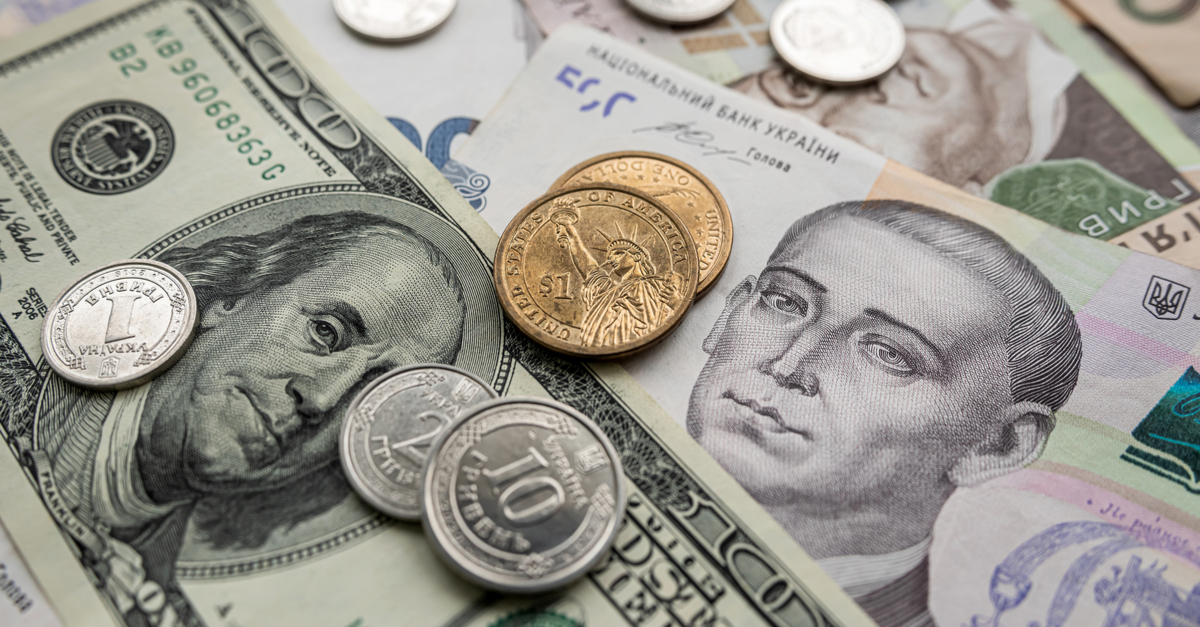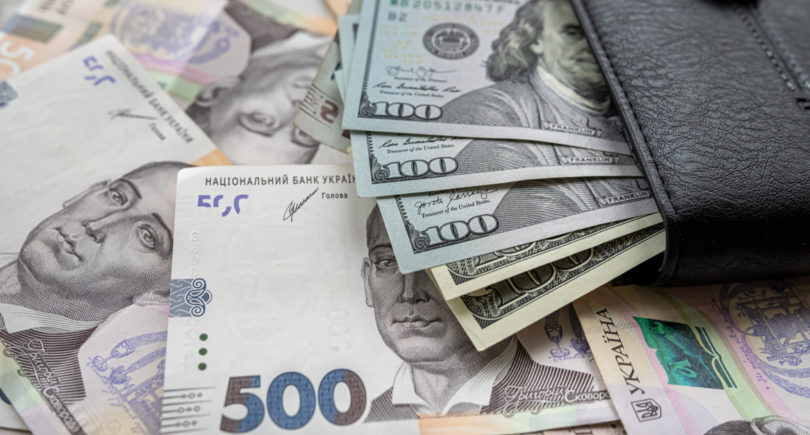
Posts State macroeconomics 2666 22 July 2022
The NBU's decision to correct the exchange rate is due to the reluctance to burn foreign exchange reserves and increase emissions
Since the beginning of the military aggression of the Russian Federation against Ukraine, since February 24, the National Bank of Ukraine fixed the exchange rate of the hryvnia to the dollar at the level of 29.25 hryvnias. This course successfully lasted almost five months, which is a very long period under current conditions.
Although the NBU promised to keep the official exchange rate at UAH 29.25/dollar until the end of martial law, but the war has dragged on: prices are rising, emissions are skyrocketing. This required a decision to weaken the exchange rate of the national currency. The decision to weaken the official exchange rate of the hryvnia against the dollar has been brewing for a long time (the market rate has long been at the level of 35-37 hryvnias/dollar), and in recent days there have been several hints at a quick change in the exchange rate policy of the National Bank.
An inevitable decision
The devaluation of the hryvnia under the conditions of the military aggression of the Russian Federation against Ukraine was only a matter of time. For example, during the war in Donbas in 2014 and 2015, Ukrainian GDP fell by 6.6% and 9.8%, respectively, and the average annual exchange rate (as a reflection of the economic situation in the country) was UAH 11.88/dollar and UAH 21.84/dollar against UAH 7.99/dollar 2013. That is, the hryvnia exchange rate fell three times. In 2022, the expected range of decline in Ukrainian GDP may be 35-45%, and it would be naive to expect even minimal stability of the hryvnia exchange rate against the dollar in the long term.
Therefore, the fact that on July 21 the NBU adjusted the official exchange rate of the hryvnia to the dollar by 25%, to 36.56 hryvnias/dollar, can even be considered an overdue decision. Even earlier, in May, the NBU canceled restrictions on the dollar exchange rate, according to which the currency should not be sold at a higher price than the official exchange rate plus 10%. Instead, due to the specifics of the calculations, it is considered that the hryvnia devalued by 20%, not 25%.
“Such a step was inevitable, because the regime of multiple exchange rates itself is the reason for the outflow of currency from the system. If someone can buy a dollar at UAH 29.25 and sell it at UAH 36-37, then this person will definitely do it. The profitability of such an operation is so great that it covers all the risks. In addition, every exporter constantly asks: why should I start currency and sell it now at 29.25, if I can do it a little later at 36-37 hryvnias per dollar?”, – considers Dmytro Boyarchuk executive director of CASE Ukraine.
According to the NBU’s estimates, the correction of the exchange rate will increase the inflow and, accordingly, the sale of foreign exchange earnings by exporters, minimize the speculative component of the behavior of market participants and make it possible to stabilize exchange rate expectations.
“This step will improve competitiveness of Ukrainian producers, converge exchange rate conditions for different groups of businesses and households, and support the resilience of the economy during the war,” – emphasized in the National Bank.
Such a decision of the regulator is certainly beneficial to exporters, who lost 20% on the exchange rate, selling currency at the non-market rate of 29.5 UAH/dollar. And this is in addition to the fact that many of them are still not reimbursed for VAT, despite the decision to do so. All this greatly eroded working capital.
Of course, it can be argued that the interests of exporters or price stability are more important to the country now, but it is the former that can ensure the country’s foreign currency income and the availability of sufficient financial resources for spending on military operations and social needs. Although the interests of exporters were not the primary reason for making such a decision.
Backup problem
One of the key reasons why the National Bank made such a decision is the reluctance to burn foreign exchange reserves. Supporting exporters (as a motive for weakening the hryvnia exchange rate) is certainly important, but when several billion dollars are spent every month to support the exchange rate, the answer to the question of whether it is necessary to adjust the exchange rate comes naturally.
“The situation of many recent weeks is the draining of international reserves by the National Bank at the rate of $1 billion per week. This situation, of course, was extremely bad, and something had to be done,” says economist Danylo Monin.
From March to the beginning of July, the foreign exchange reserves of the NBU decreased by $4.8 billion – from $27.54 billion to $22.75 billion. The National Bank predicts a decrease in foreign exchange reserves in the second half of the year by 8.6% – from $22.8 billion to $20.8 billion and maintaining them at this level in 2023.
To be fair, the NBU also carried out calculations on the national debt, but, on the other hand, there was also a replenishment of reserves. In any case, the long-term situation of burning reserves to support the exchange rate of the national currency a priori was not the right decision in the current economic situation.
It should also be taken into account that the decision to weaken the hryvnia will make it possible to reduce the scale of NBU issuance. Since the beginning of the war, the National Bank has already directly financed the state budget through the purchase of military bonds for 225 billion UAH and expects to maintain the ceiling of such operations agreed with the Cabinet of UAH 400 billion this year.
“Today, the alternative to this (decision on exchange rate correction – Ed.) is a large-scale issue of the hryvnia, which sooner or later will cause new and new waves of currency shocks. The exchange rate correction should reduce the need for additional issuance,” – emphasizes Dmytro Boyarchuk.
The reverse side
The adjustment of the exchange rate will inevitably lead to an increase in the prices of imported goods at least in an equivalent amount – by approximately 25-30%. Because importers used to be able to buy currency at a preferential rate of UAH 29.25/dollar, but now they don’t have that opportunity.
On the other hand, prices for everything have already risen after the start of the war. That is, many companies have already automatically factored into the prices of products and services not only the growth of their own costs, but also the increased exchange rate and corresponding risks.
A possible rise in prices will inevitably increase inflation. Inflation in Ukraine accelerated to 21.5% year-on-year in June, compared to 18% a month earlier. In 2022, the National Bank predicts an increase in inflation to a level of slightly more than 30%. According to the regulator, devaluation of the hryvnia will add 2-3 percentage points to inflation this year.
The adjustment of the official hryvnia exchange rate will have only a limited impact on the acceleration of price growth, which has been caused primarily by the consequences of the war for the supply of goods and services and cost of logistics, as well as price developments on world commodity markets in recent months,” – informs the NBU.
In general, according to Danylo Monin, the correction of the exchange rate leads to an increase in inflation, but in the medium term improves the financial stability of the state in a long war.





